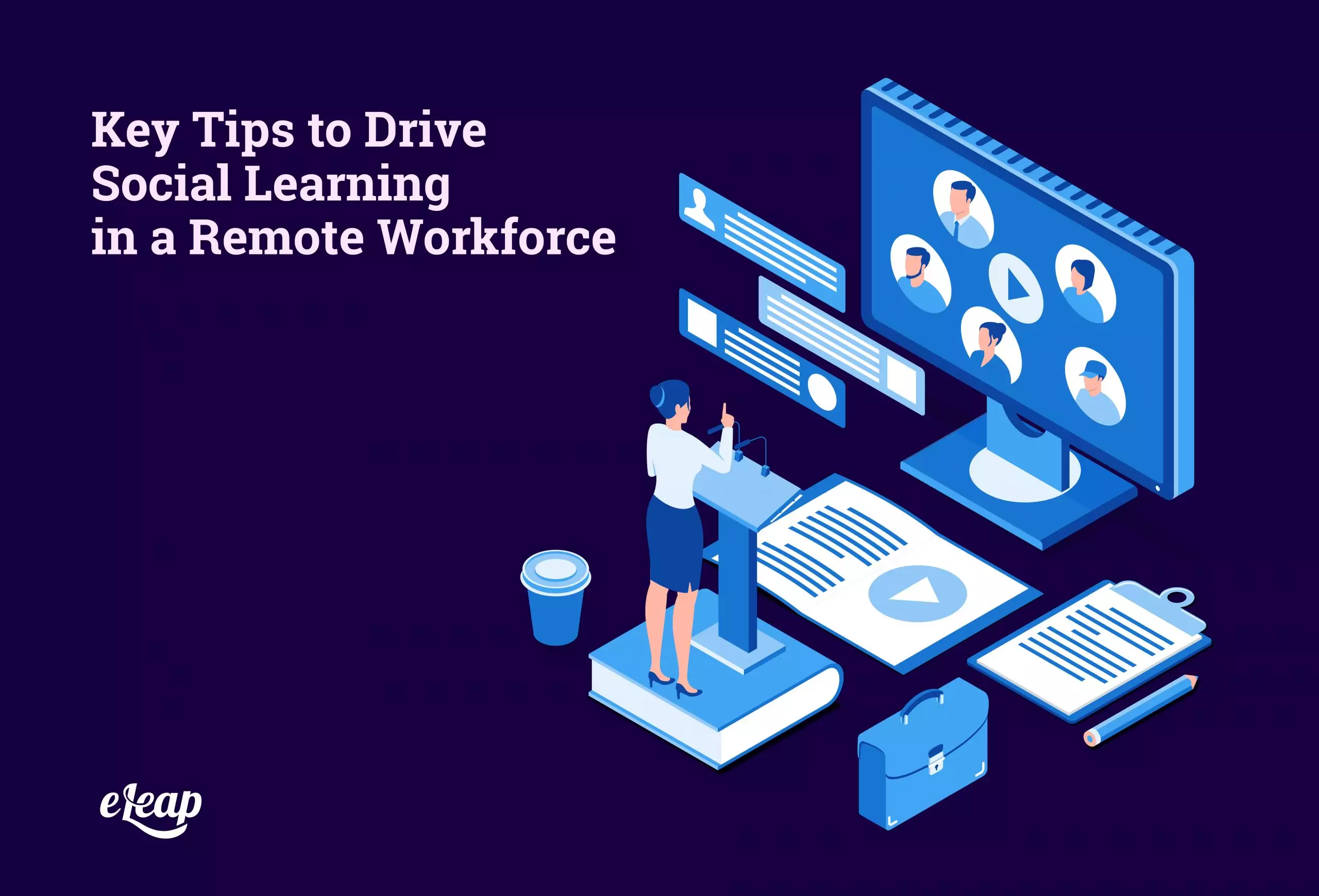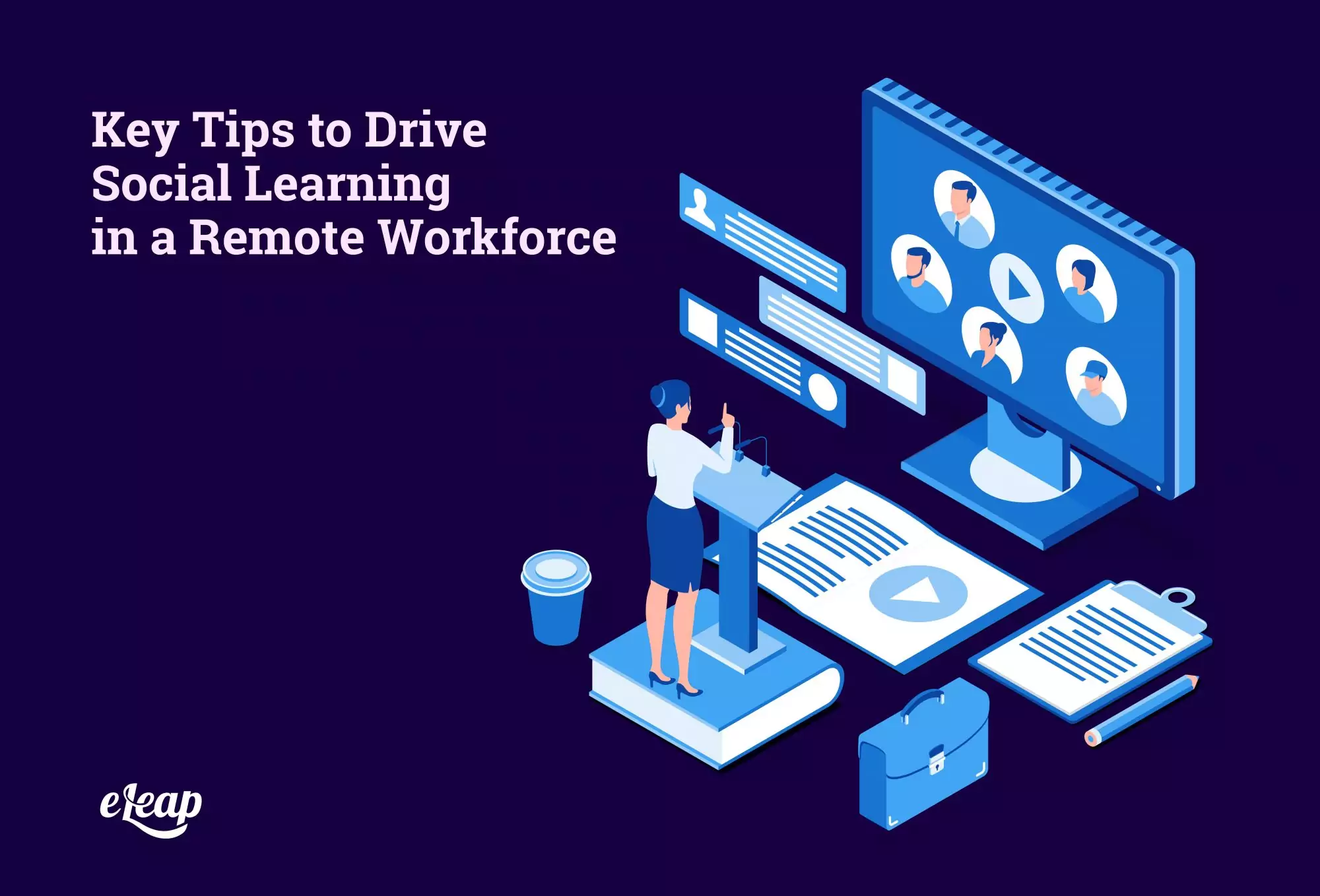Key Tips to Drive Social Learning in a Remote Workforce

Humans are social creatures. We are hardwired for interaction. That is how we learn best – from one another, in an in-person environment. As the world has been turned upside down due to the pandemic, we have found that the way we learn needs to change too. There’s a rise in social learning in a remote workforce teams due to the increase in work-from-home (WFH) initiatives.
Unfortunately for many organizations, the ongoing effects of the COVID-19 pandemic mean that social learning has largely been put on pause. The good news is that working from home does not have to mean your learners have no access to social learning. It just requires a little out-of-the-box thinking on the part of leaders and administrators. In this post, we will explore some important tips to help drive social learning within your remote workforce.

Rethink Your Knowledgebase
Many organizations today possess knowledgebases – repositories of information pertinent to the business, employees, customers, products/services, and more. However, that knowledgebase is often tucked away out of sight. Rethinking how this information is accessed and used can support improved social learning.
For instance, by making knowledgebase content available through social media pages, as well as apps designed for sharing knowledge, it becomes possible for employees to access this information. They can also engage with one another in relation to it, learn together, and build mutual understanding.
Personalized Learning Paths through Curated Content
Your learning management system is a critical key to L&D success in the modern, remote-work world. However, you cannot simply provide access to content and then expect your learners to excel. By creating personalized learning paths through curated content, it becomes possible to drive social learning, as well as improved individual learner outcomes.
Personalized learning paths ensure that the content being taught is completely relevant to the specific learner in question. It might be based on their interests, their position with the company, their overall career path, or some other metric, but that relevance is key. The curated content part is where the social learning element enters the picture.
This content is relevant to the learner’s path but is curated from third-party sources. It might be news stories, industry reports, blog posts from thought leaders, or something completely different. Once curated and made available, it provides the learner not only with new information to feed their own learning needs but sharable content that they can spread to other employees through recommendations.
User-Generated Content
Think of social learning – it’s the give and take of information from one person to another. User-generated content is the digital equivalent, allowing one person to codify what they want to share into a digital format and then allow others to read or experience their thoughts. By working user-generated content into your L&D ecosystem, it becomes possible to support social learning and even to form stronger bonds between employees, even when they’re not interacting directly with one another.
In an ideal scenario, more experienced employees would create content that would then be shared with less experienced employees. Not that “experienced” here does not necessarily equate to time with the company. A new employee can have more experience with a particular subject area than an employee who has been with the company for many years.
User-generated content can also cover a vast range of types – how-to content, tool recommendations, best practices, and so much more. Each user’s content will be unique and created in that person’s specific voice, contributing to social learning, building stronger relationships, and even helping some employees become thought leaders.
Discussion Forums
One key element of social learning often missing in the remote work world is the ability to discuss things directly. Discussion forums alleviate that problem and provide employees with the ability to delve as deeply as necessary into the discussion surrounding important topics. However, care must be undertaken to ensure that discussion forums do not turn into problems.
The key consideration is that forums should be moderated. One needs only look at unmoderated Facebook groups to realize the dangers inherent with that particular model. Not that your employees would be intentionally rude or hateful, but simple misunderstandings can quickly escalate. Moderation provides an easy way to defuse those situations.
How might you moderate these forums? You can go a number of different routes. One that may work for less active forums is to require all comments/questions/contributions to be approved by a moderator before going “live”.
Note that in active discussion forums, this particular model will likely require multiple moderators to ensure that messages can be posted promptly. Another option is to simply have someone present in the forum during ‘operating hours’ who is responsible for preventing discussions from escalating into arguments or for removing potentially offensive posts.
Connect with Social Media
While businesses might limit their social media exposure to an official account on relevant platforms, employees have personal accounts. The two do not often overlap, but there is an argument to be made that employers should act as a bridge to connect employees via social media. Specifically, the employer could use Facebook, LinkedIn, and other social platforms to connect learners with subject matter experts, with mentors, or with coaches. The goal here would be to use digital technology and existing platforms to offer just-in-time training and/or answers to specific questions.
However, this also requires that if an organization acts as a bridge between the two, that organization must also apply rules of conduct for employees and SMEs/mentors. The employer must bear some share of responsibility for behavior and communication, which means a set of rules and communication norms should be agreed to before beginning this sort of initiative.
More Options Than You Might Realize
We covered a few key tips to help drive social learning in your remote workforces, but there are many other options there. For instance, consider building a digital community of interest that allows users to come together digitally, or finding ways to use social media apps to offer performance support. With a little time and creativity, you will find a myriad of ways to engage learners and help foster that in-person connection that’s so often lost in the digital world.